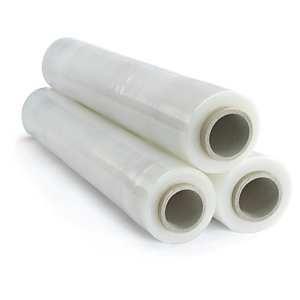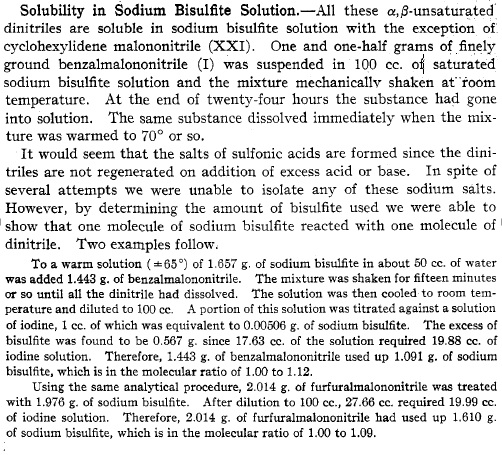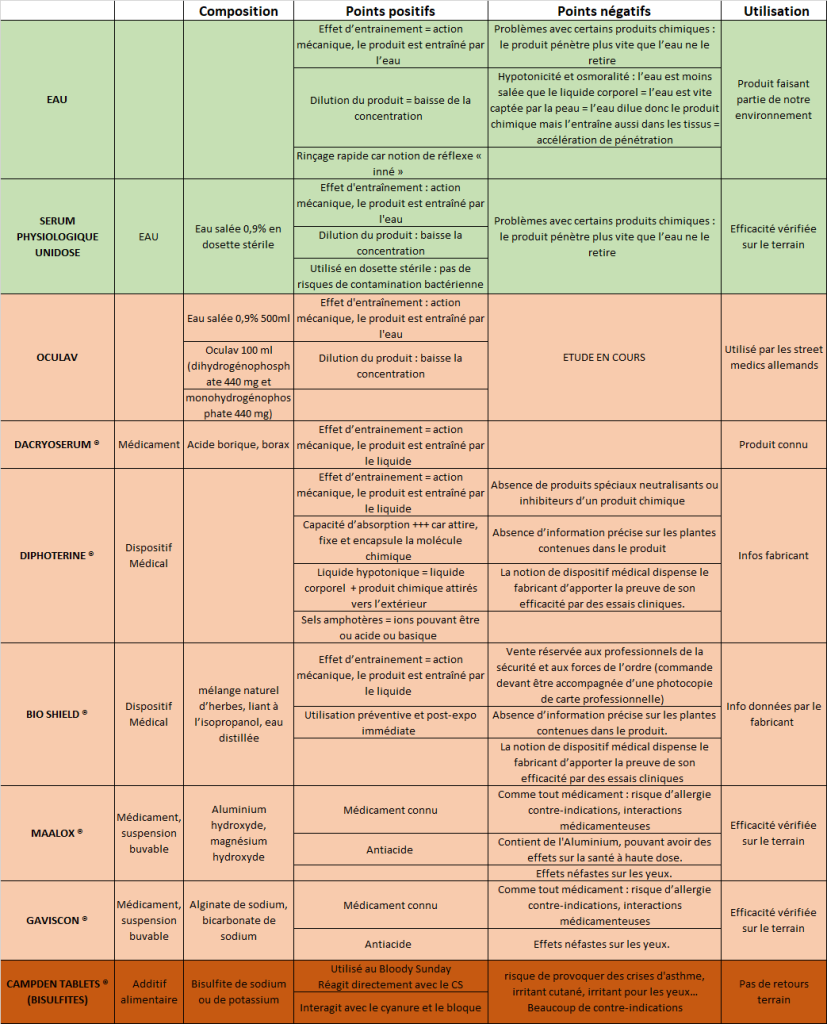The non-lethal weapons market is projected to grow from USD 5.65 billion in 2015 to USD 8.37 billion by 2020, at a CAGR of 8.2% during the forecast period of 2015 to 2020. Non-lethal weapons also known as less lethal weapons and this report covers forecasts of the non-lethal weapons market and its dynamics over the next five years, while also recognizing market application gaps, evolving technologies, recent developments in the market, and high potential geographic regions and countries. The non-lethal weapons market has been analyzed on the basis of end user (including military and law enforcement), product type (direct contact weapons, directed energy weapons), and technology (electromagnetic, mechanical & kinetic, chemical, others), considering 2014 as the base year and forecast period of 2015 to 2020. The report provides in-depth market intelligence regarding the non-lethal weapon market and major factors, including drivers, restraints, opportunities, and challenges that may influence the growth of the market. It also provides an analysis of micromarkets with respect to individual growth trends, growth prospects, and their contribution to the overall market.
Market Dynamics
Drivers
- Increasing political disputes and civil unrest
- Militarization of law enforcement agencies
Restraints
- Stringent environment and governmental regulations
- Declining defense budgets of advanced economies
Opportunities
- Increasing research and development
- Increasing defense expenditures of emerging economies
Challenges
- Trafficking and indiscriminate use of non-lethal weapons
- Apprehensions among end users
Increasing political disputes and civil unrest drives the global non-lethal weapons market
Political disputes, violence, and civil unrest have been on the rise globally, in the recent years, driven by domestic as well as geopolitical situations and policies. The adverse geopolitical conditions in Eastern Europe, the Middle East, and East Asia have contributed highly to this global trend. Sub-Saharan Africa is home to 16 high to severe risk countries, barring a few others, driven by the increasing political violence and insurgency in the region. In terms of concentration of risk of political violence and civil unrest, the major affected regions have been identified to be the Middle East, South Asia, and North Africa. Rising political violence, terrorism, insurgency, and civil unrest in the Middle East is expected to render the region the highest growing in the market for non-lethal weapons in the coming years. The intensification of political violence in Iraq, Yemen, Syria, and Saudi Arabia can be regarded as one of the major factors for this trend. Some of the key conflicts or instances of conflict/civil unrest in the Middle East have been represented below:
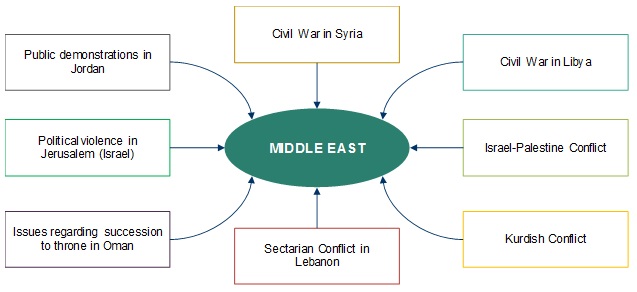
The following are the major objectives of the study.
- To analyze the overall non-lethal weapons market, along with market projections from 2015 to 2020
- To define, describe and forecast the global non-lethal weapons market based on end user, product type, and technology, along with country-level analysis
- To understand the market structure by identifying various subsegments of the non-lethal weapons market
- To provide in-depth market intelligence regarding market dynamics and major factors that influence the growth of the non-lethal weapons market (drivers, restraints, opportunities and industry-specific challenges)
- To strategically analyze micromarkets1 with respect to individual growth trends, future prospects, and their contribution to the overall non-lethal weapons market
- To analyze the opportunities in the market for stakeholders by identifying key market trends
- To forecast the market size of segments with respect to major countries, namely the US, Canada, the UK, Germany, France, Russia, Turkey, China, India, Japan, South Korea, Australia, Saudi Arabia, Israel, UAE, and Brazil, among others
- To analyze competitive developments such as long-term contracts, joint ventures, mergers and acquisitions, new product launches and developments, and research and development in the non-lethal weapons market
- To provide a detailed competitive landscape of the non-lethal weapons market, along with analysis of the business and corporate strategies adopted by the key market players
- To strategically profile key market players and comprehensively analyze their core competencies2
During this research study, major players operating in the non-lethal weapons market in various regions have been identified, and their offerings, regional presence, and distribution channels have been analyzed through in-depth discussions. Top-down and bottom-up approaches have been used to determine the overall market size. Sizes of the other individual markets have been estimated using the percentage splits obtained through secondary sources such as Hoovers, Bloomberg BusinessWeek, and Factiva, along with primary respondents. The entire procedure includes the study of the annual and financial reports of the top market players and extensive interviews with industry experts such as CEOs, VPs, directors, and marketing executives for key insights (both qualitative and quantitative) pertaining to the market. The figure below shows the breakdown of the primaries on the basis of the company type, designation, and region considered during the research study.
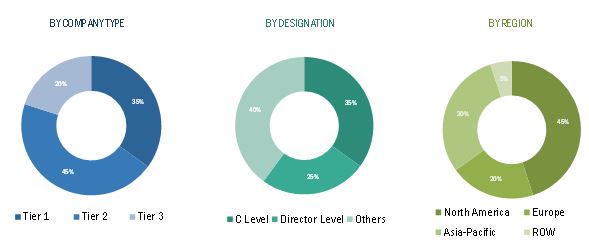
To know about the assumptions considered for the study, download the pdf brochure
The ecosystem of the non-lethal weapons market comprises of raw material suppliers, manufacturers, distributors, and end users. The key end users of the non-lethal weapons market are law enforcement sector, followed by military. Some of the key players of the non-lethal weapons market include Taser International Manufacturing Company (US), Combined Systems Inc. (US), and The Safariland Group (US), among others.
Target Audience
- Non-lethal weapons manufacturers
- Non-lethal weapons dealers
- Sub-component manufacturers
- Technology support providers
Scope of the Report
This research report categorizes the global non-lethal weapons market into the following segments and subsegments:
Global Non-lethal Weapons Market, By End User
- Law Enforcement
- Military
Global Non-lethal Weapons Market, By Product Type
- Direct Contact Weapons
- Directed Energy Weapons
Global Non-lethal Weapons Market, By Technology
- Electromagnetic
- Mechanical and Kinetic
- Chemical
- Others
Global Non-lethal Weapons Market, By Region
- North America
- Europe
- Middle East
- Asia-Pacific
- Latin America
- Africa
Critical questions which the report answers
- How will the non-lethal weapons market drivers, restraints and future opportunities affect the market dynamics and subsequent market analysis of the associated trends?
- Which are the key players in the market and how intense is the competition?
Customizations available for the report
With the given market data, MarketsandMarkets offers customizations as per specific needs of a company. The following customization options are available for the report:
Geographic Analysis
- Further breakdown of the Rest of Asia-Pacific market into Australia, Malaysia, and New Zealand, among others
Company Information
- Detailed analysis and profiling of additional market players (Upto 5)
The non-lethal weapons market is projected to grow from USD 5.65 billion in 2015 to USD 8.37 billion by 2020, at a CAGR of 8.2% during the forecast period. Factors such as militarization of law enforcement agencies, polarization of civilians and driving maximum efficacy and minimum liability, among others are directly influencing the non-lethal weapons market.
The non-lethal weapons market is a highly dynamic and high-potential market for several reasons. The volatile dynamics of this market can be attributed to the changing geo-political dynamics of the global economy as well as the increasing incidences armed conflicts, violence, and terrorism, among others. For instance, the Middle East, North Africa, and South Asian regions have been identified to be high-potential markets for non-lethal weapons, owing to the exponential growth in demand from these regions in recent years. These rising trends of demand are the consequences of various instances of civil unrest and conflicts in these regions, such as the civil war in Syria, sectarian conflicts in Lebanon, political violence in Jerusalem, and so on. Such events call for highly enhanced response from law enforcement as well as military forces. As a result, the procurement of non-lethal weapons by law enforcement agencies is slated to increase significantly in the coming years.
In this report, the market has been segmented by product type, by end-user and by technology. The product type is subcategorized as direct contact weapons and directed energy weapons, whereas the end–user is segmented into military and law enforcement. The directed energy weapons market is growing at a higher CAGR in comparison with direct contact weapons due to advancement in laser technologies and microwave-based weapons, such as active denial systems or ‘pain ray’ weapons.
The Asia-Pacific region is expected to exhibit the highest growth rate in the non-lethal weapons market, and is projected to grow at the highest CAGR during the forecast period from 2015 to 2020. The Asia-Pacific market is expected to grow at the highest CAGR because several Asia-Pacific countries such as India, China, Australia, South Korea, and others have focused on production of non-lethal weapons for military and law enforcement application, such as border control, riot control, and de-escalations use in one-on-one conflict, among others.
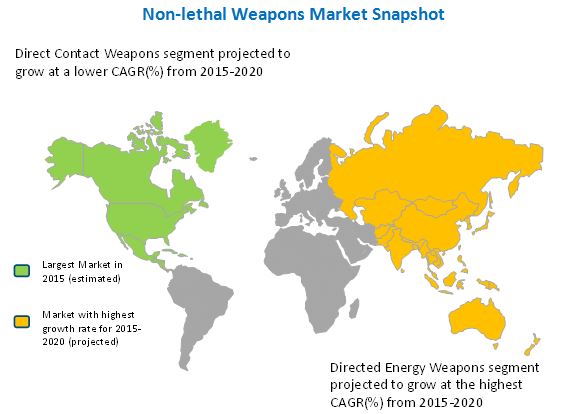
The growth of the non-lethal weapons market may, however, be affected by certain major restraints in the coming years. These factors include stringent environmental and governmental regulations, and declining defense budgets of advanced economies, among others.
Several key players operating in the global non-lethal weapons market have been identified to be Taser International Manufacturing Company (US), Combined Systems Inc. (US), The Safariland Group (US), and Amtec Less Lethal Systems Inc. (US) and Condor Non-lethal technologies (Brazil), among others. Long-term contracts, and mergers and acquisitions are the major growth strategies adopted by the major players to strengthen their position in the non-lethal weapons market, while also enhancing their product offerings.
non-lethal weapon market industry analysis
| Qualitative Market Analysis | Quantitative Market Analysis |
| Market dynamics and key challenges | Market size estimates and forecast up to 2022 |
| Industry and Technology Trends | Market size estimates and forecasts up to 2022, by end user |
| Innovation & Patent Registrations | Market size estimates and forecasts up to 2022, by product type and technology |
| Competitive Landscape & Competitive Scenario | Regional market size forecasts, by end user, product type, technology |
| Company Profiles & Market Ranking Analysis | Countries market size forecasts, by technology |
Law enforcement segment of non-lethal weapon market is projected to grow at the highest CAGR during the forecast period
The non-lethal weapon market has been segmented based on end user into military and law enforcement. The overall non-lethal weapons market is dominated by the law enforcement segment, primarily because law enforcement agencies are deployed for riot control, and military personnel are deployed only when the riot situation is out of control of the police forces or Special Forces.
End User, 2016 (%)
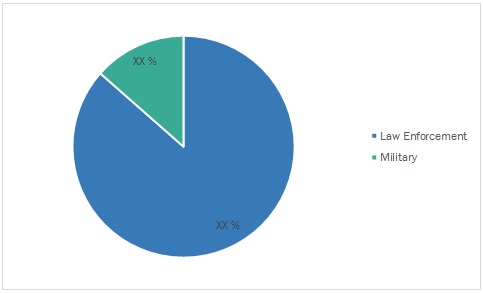
Law Enforcement
The law enforcement segment, in this context, is constituted by three sub-segments, namely, first responder, police forces, and Special Forces. Among these agencies, the police forces segment dominates the non-lethal weapons market, as of 2015. Special Forces have primarily resulted from the increasing militarization of police forces worldwide; for instance, the SWAT (Special Weapons & Tactics) team in the US.
Law Enforcement, By type 2016 (%)
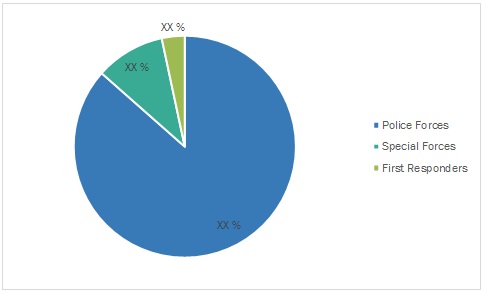
Police forces are deployed in large numbers during disasters, accidents, terrorist attacks, riots, and many such incidents that may affect citizens or public assets. To neutralize such threats, police forces are instructed to first use non-lethal weapons, as per the rules of engagement. The following figure represents the market projections for the law enforcement non-lethal weapons market during the period of 2014 to 2020.


